13 Rare Vintage Toy Lines That Started With Comic Book Characters
Comic book heroes and villains have inspired toys for decades, giving kids and collectors a way to bring their favorite stories off the page. Some toy lines came directly from the panels before movies or shows made the characters widely known. These figures captured the look and spirit of the comics, from classic heroes to darker independent titles. The result is a mix of toys that still stand out for their connection to the original source.
This post may contain affiliate links, which helps keep this content free. Please read our disclosure for more info.
Mego World’s Greatest Super Heroes
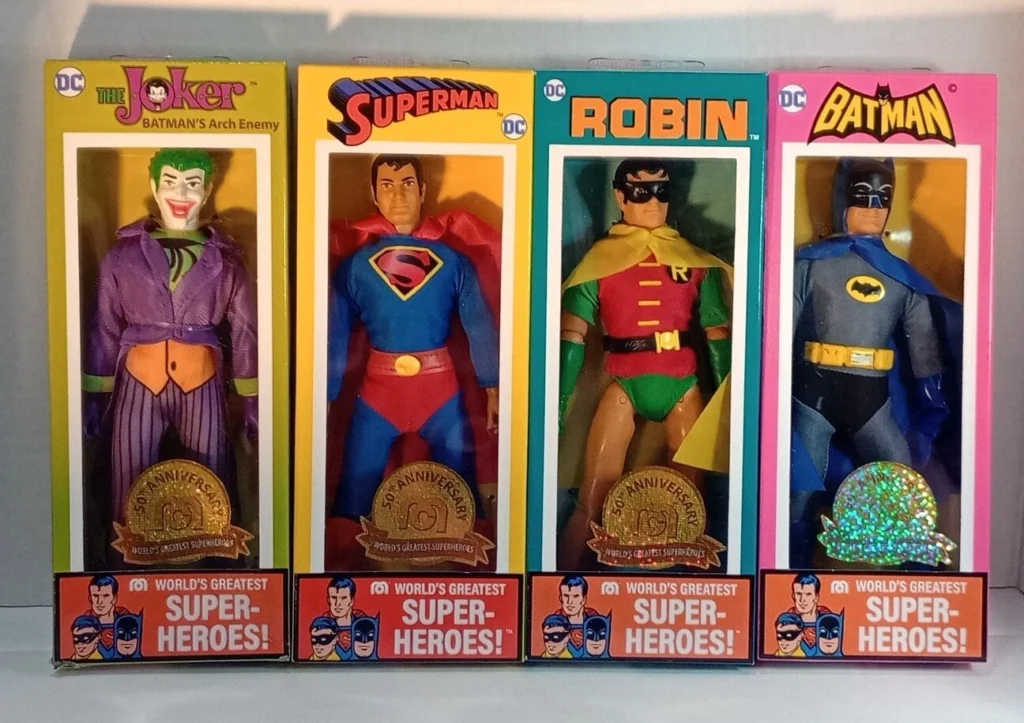
Mego broke new ground in the 1970s by introducing its World’s Greatest Super Heroes line. The figures stood at 8 inches tall and featured cloth outfits that made them feel closer to dolls than the hard plastic toys of the time. Kids could finally pose Batman, Spider-Man, and other favorites side by side, even if they came from rival publishers. This line set the stage for crossover play that felt fresh at the time.
Collectors remember Mego’s wide character selection, which stretched far beyond Superman and Spider-Man. Heroes like Green Arrow, Shazam, and Falcon were given attention rarely seen in toys back then. The line also included villains such as the Joker and Penguin, making play more dynamic. Even today, vintage Mego figures remain highly collectible.
Kenner Super Powers Collection
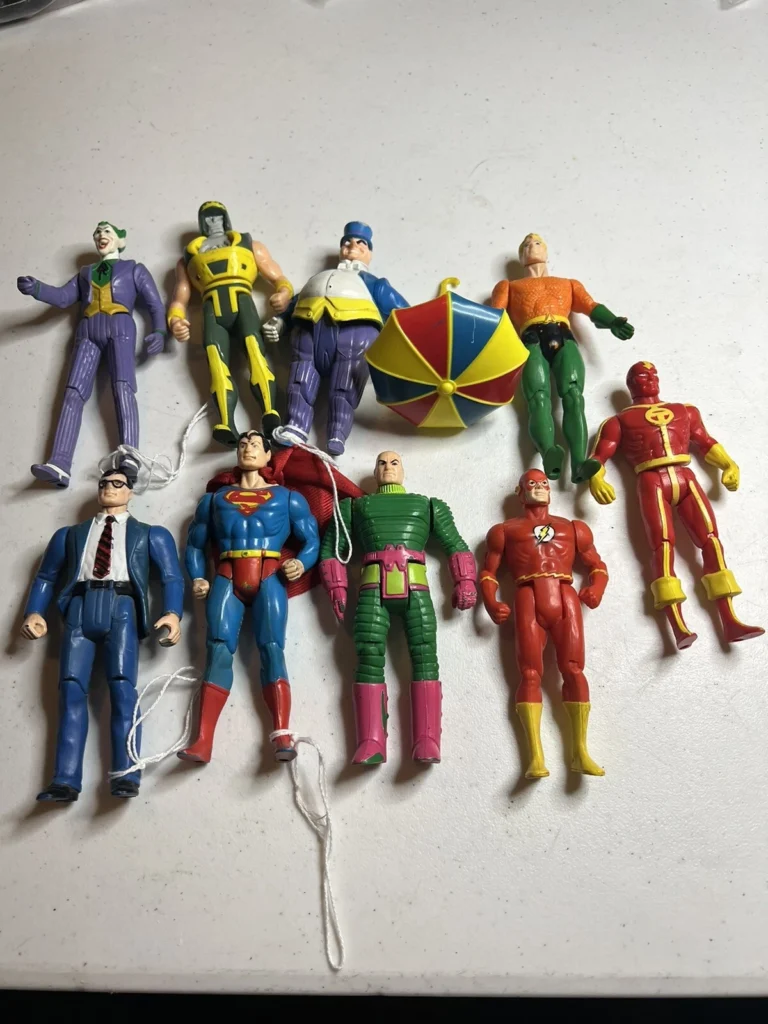
Kenner’s Super Powers Collection arrived in 1984 with a gimmick that felt exciting to kids. Each figure had an action move triggered by squeezing legs or arms, tying directly into the hero’s comic powers. Superman threw punches, Aquaman swam, and Wonder Woman raised her lasso. The sculpting stayed close to the DC Comics art style of the era.
Beyond the toys themselves, Kenner supported the line with vehicles and playsets. The Hall of Justice became a centerpiece in many households. Characters like Darkseid and Brainiac introduced comic villains into toy aisles that had mostly been filled with heroes. The figures are still remembered as some of the most faithful DC products from the 1980s.
Mattel Secret Wars
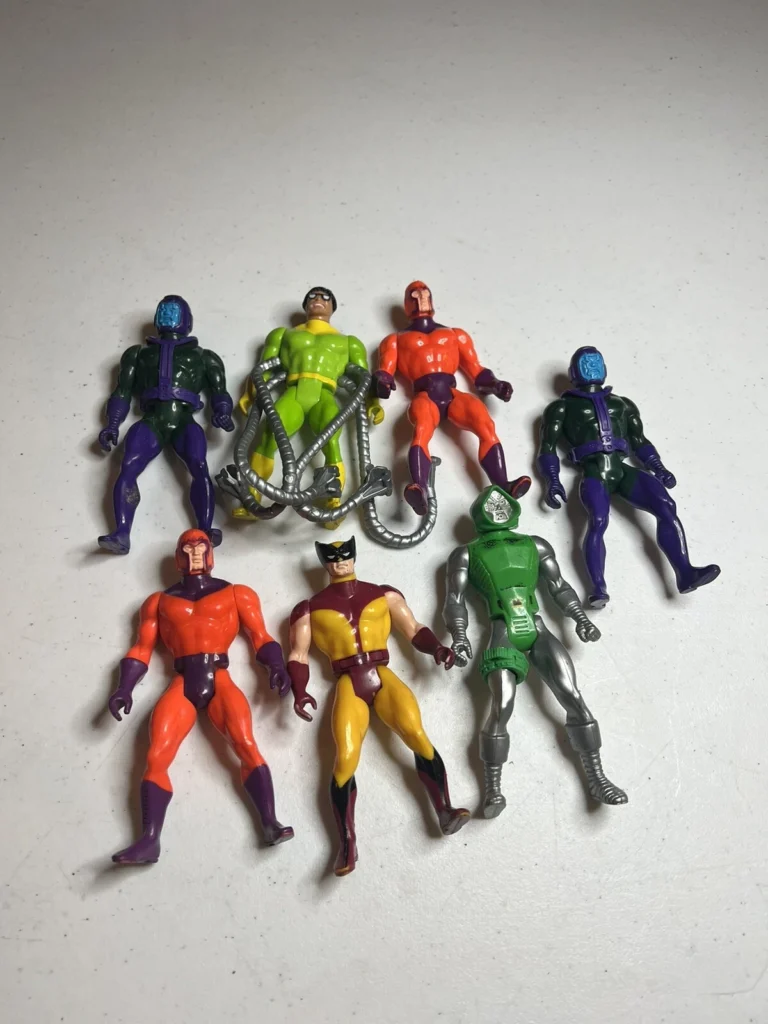
In the same year Kenner launched its DC line, Mattel entered the market with Secret Wars. The toys tied into Marvel’s comic book event of the same name, giving kids a direct link to ongoing stories. Characters such as Captain America, Wolverine, and Magneto were produced in a bright, colorful style. Each came with a shield that displayed hologram images.
Though the line was smaller than Kenner’s DC rival, it made a big impression. Vehicles and playsets like Doom’s Tower gave villains equal attention to heroes. Secret Wars also marked the first time some Marvel characters had action figures at all. For many fans, these toys are a nostalgic reminder of 1980s comic culture.
Toy Biz Marvel Super Heroes
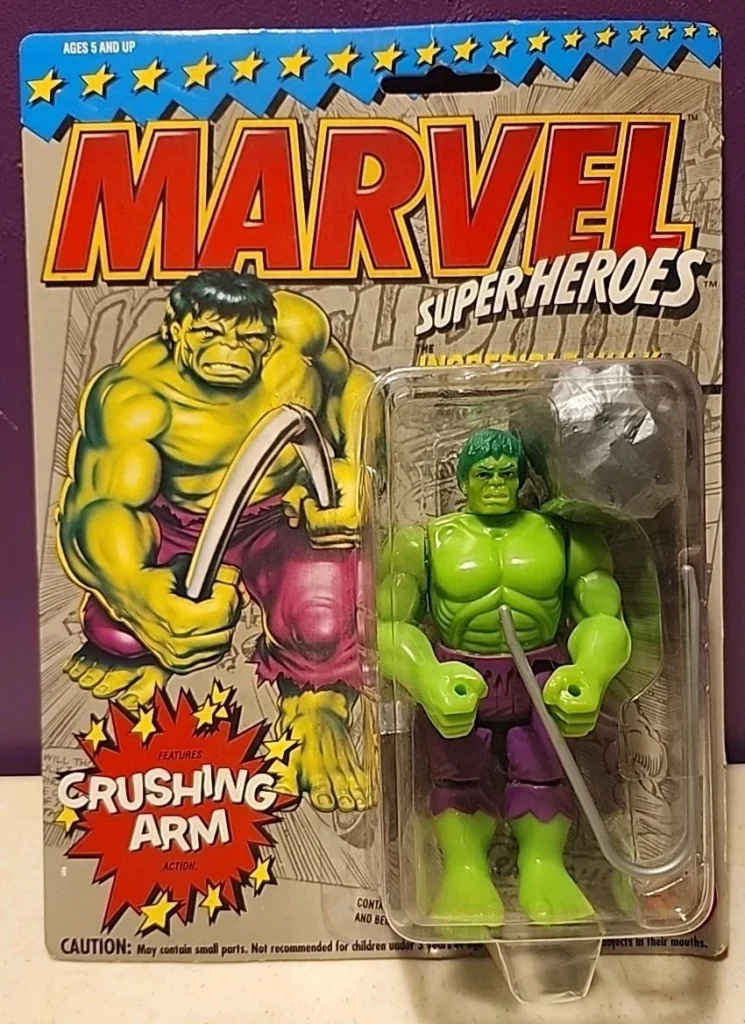
In the early 1990s, Toy Biz released a line simply titled Marvel Super Heroes. These figures were affordable and widely available in toy stores, making comic characters accessible to kids everywhere. The line featured Spider-Man, Hulk, Silver Surfer, and even Daredevil, a character rarely seen in toy form at the time. Many came with action features such as web-shooting or smashing arms.
This line paved the way for Toy Biz to hold the Marvel license for years to come. Later waves expanded into teams like the Fantastic Four and Avengers. While the figures were simpler than modern collectibles, they became a starting point for young fans building collections. The colorful packaging made them stand out on shelves in the early 1990s.
Marvel Legends
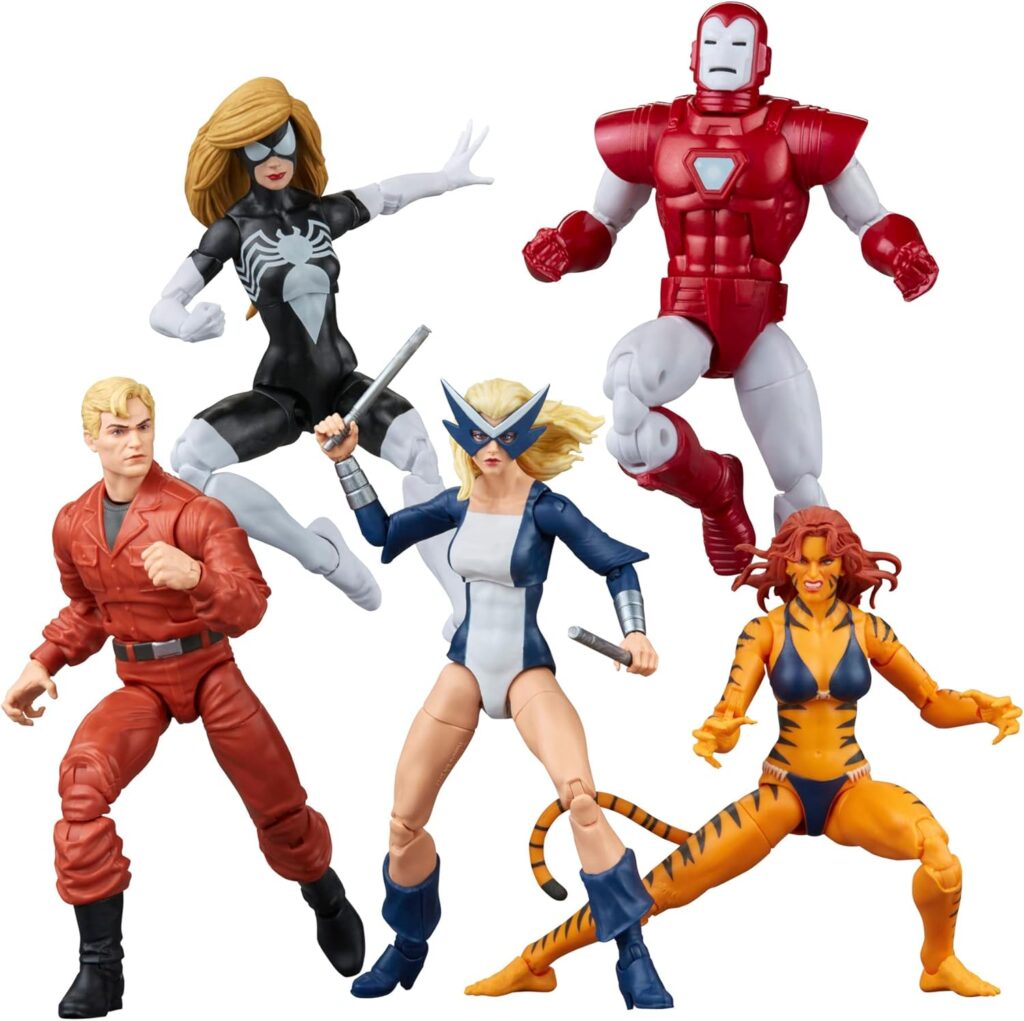
Marvel Legends debuted in 2002 and quickly changed expectations for superhero figures. The 6-inch scale allowed for more detail and articulation than older lines. Figures often came with a comic reprint and a display stand, emphasizing their comic origins. Characters outside the mainstream, such as Deadpool and Black Panther, gained wider attention through this line.
A unique draw was the Build-A-Figure feature, where parts included with each toy combined into a larger character. This encouraged collectors to track down every release in a wave. Hasbro later took over the line but kept the focus on comic accuracy and poseability. Even today, Marvel Legends remains a leading series for comic-inspired toys.
DC Direct / DC Collectibles
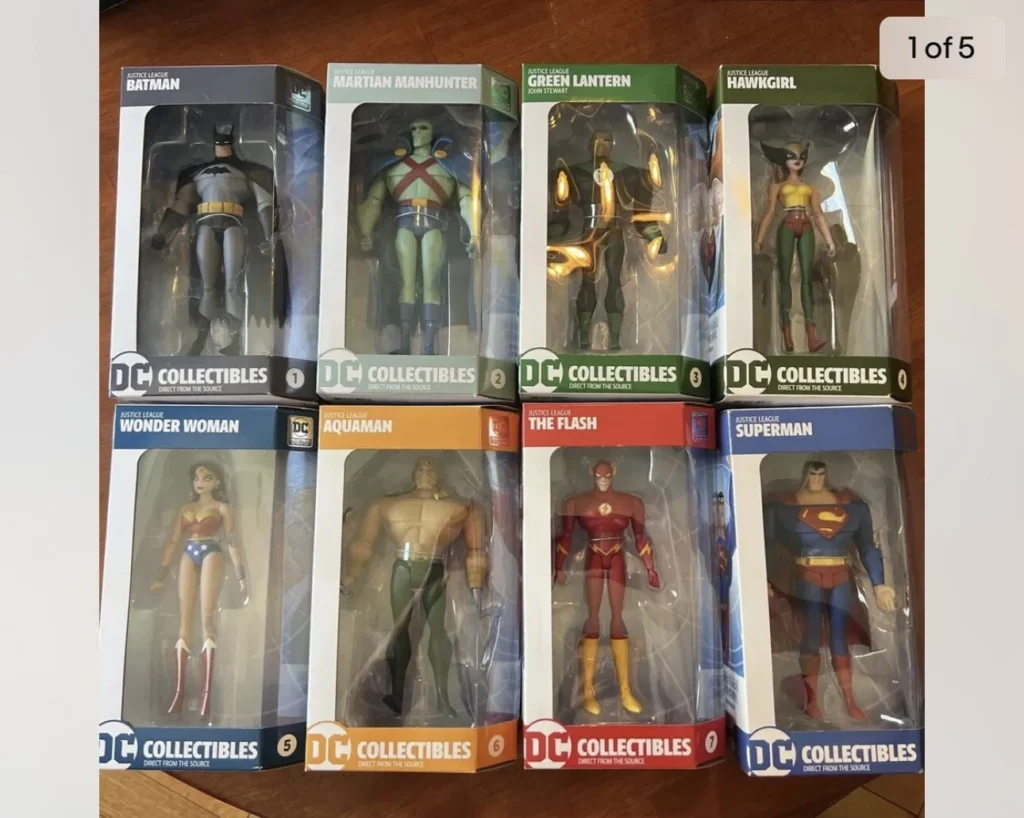
Launched in 1998, DC Direct gave fans a way to own figures that matched comic book art directly. Instead of generic versions, the toys reflected specific artists’ styles, such as Alex Ross or Jim Lee. Characters came in story-themed assortments, including arcs like Kingdom Come and The Dark Knight Returns. This made the figures feel like part of the comic library rather than just toys.
Collectors embraced the line because it filled gaps left by mass-market releases. Figures like Zatanna, Deadman, and obscure Green Lantern Corps members appeared in the lineup. The detail and sculpting appealed to adult fans more than kids. Over time, DC Direct was rebranded as DC Collectibles but kept the same focus on comic book roots.
G.I. Joe: A Real American Hero Comics Figures
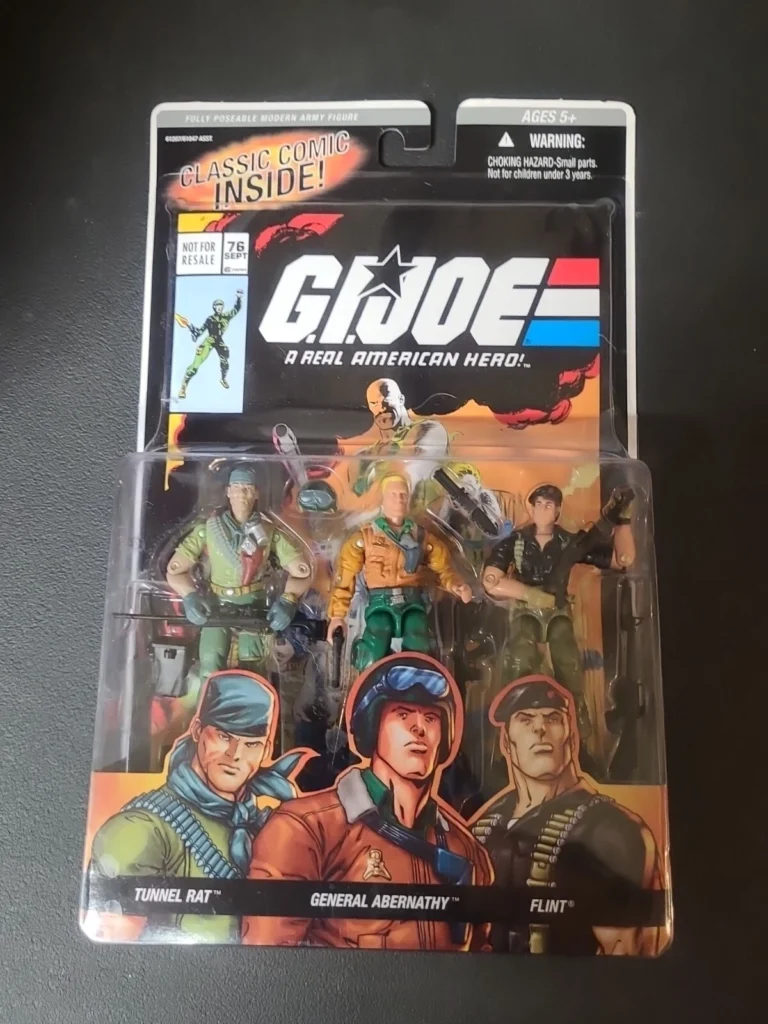
While G.I. Joe began as a toy brand in the 1960s, its 1980s Marvel Comics series shaped many characters. Figures based on designs first introduced in the comics, such as Snake Eyes’ updated look, became staples of the line. The comics gave depth to the characters, and Hasbro translated those stories into toys. This cross-pollination kept the line fresh.
Collectors often note how the comics and toys fed into each other. Larry Hama’s storytelling introduced characters and vehicles that appeared in plastic soon after. Unique figures like the Oktober Guard reflected their comic origins rather than the cartoon. In this way, G.I. Joe stands as a rare example where the comics actively influenced the toy line.
Spawn by McFarlane Toys
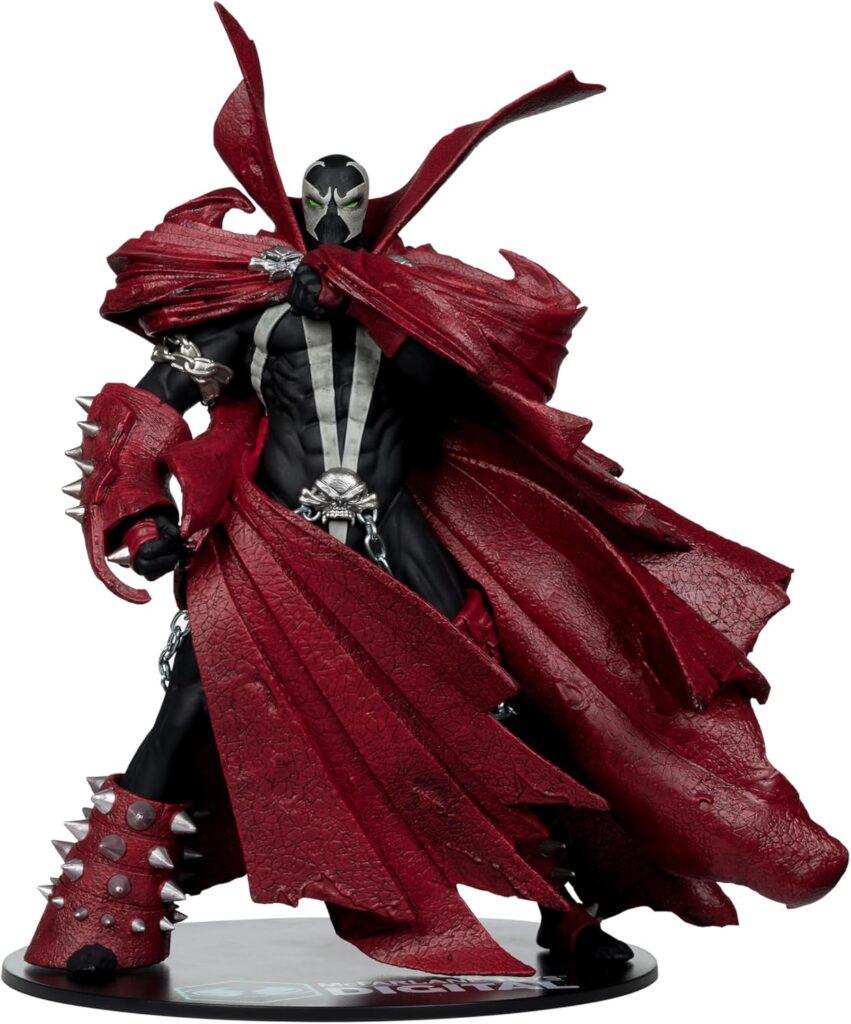
Todd McFarlane used the popularity of his Spawn comic to launch McFarlane Toys in 1994. The figures were based directly on the dark, stylized look of the comics. Detailed sculpting and dramatic poses set them apart from the simpler superhero toys of the era. Spawn, Violator, and other characters felt like small statues rather than playthings.
The line was groundbreaking in its push for realism and collector appeal. McFarlane expanded into other Image Comics characters and eventually licensed lines outside comics. Still, Spawn figures remain the backbone of the company’s catalog. They showed that toys could be marketed as collectibles without losing their comic connection.
X-Men Toy Biz Line
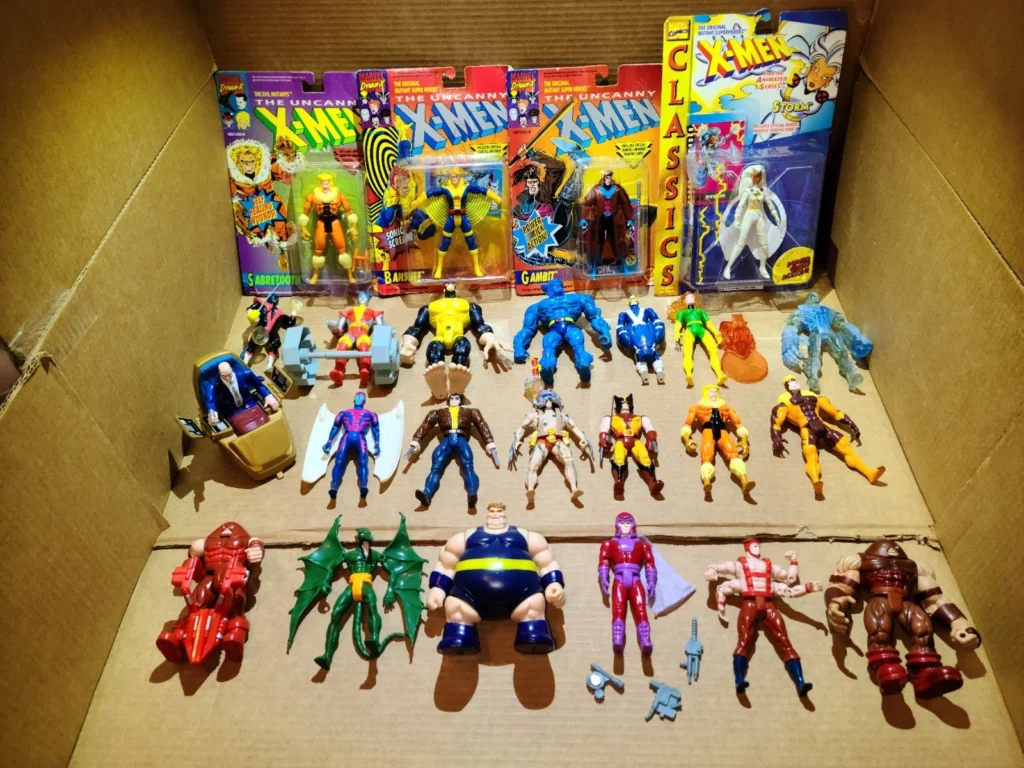
Before the animated series exploded in popularity, Toy Biz introduced X-Men action figures in 1991. The lineup focused on comic designs, giving Wolverine his classic yellow suit and Cyclops his blue and yellow outfit. Magneto and Storm rounded out early waves, offering a balance of heroes and villains. Accessories like spring-loaded weapons made them interactive.
The line became a success and expanded rapidly. Characters such as Archangel, Apocalypse, and Nightcrawler followed in later releases. Fans appreciated how the figures brought comic storylines to life on toy shelves. These early toys laid the groundwork for the X-Men’s lasting presence in action figure form.
The Amazing Spider-Man (Mego / Toy Biz)
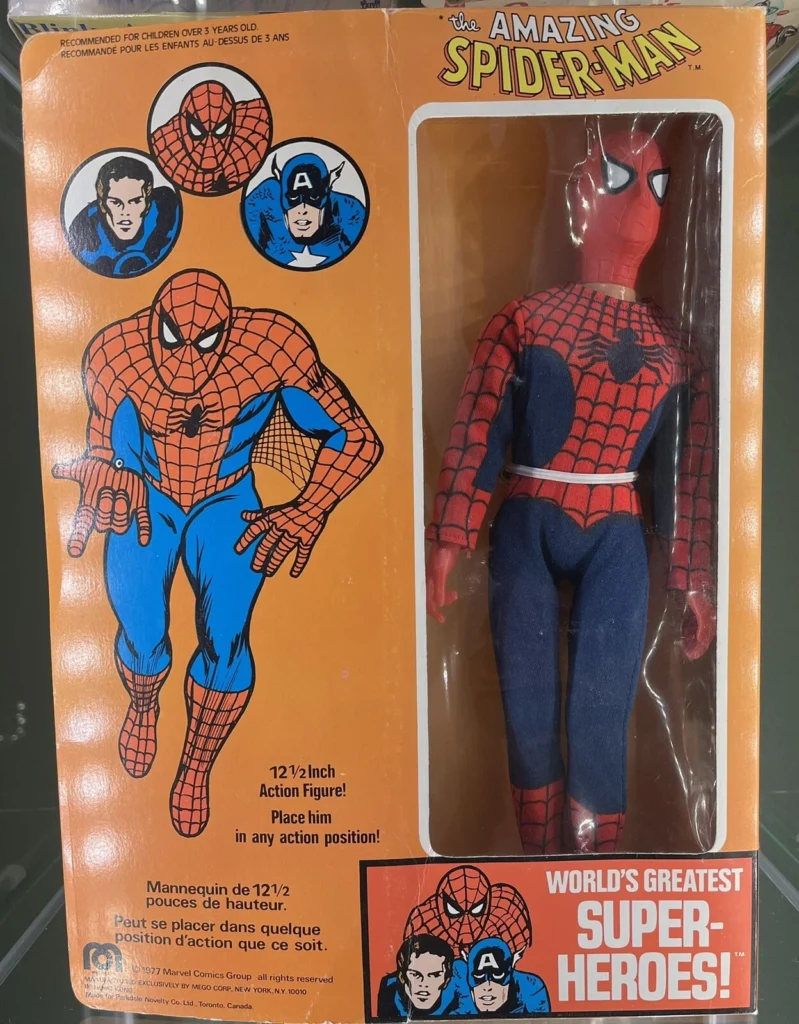
Spider-Man was one of the earliest Marvel characters to receive an action figure. Mego produced him in the 1970s, complete with a cloth costume and bendable limbs. The figure captured the charm of the comic’s design more than any cartoon version at the time. Kids could swing him around on homemade webs, just like in the comics.
Later, Toy Biz continued the tradition with 1990s Spider-Man figures tied directly to comic costumes. Variants like black-suit Spider-Man or Scarlet Spider reflected the comic stories of the day. These toys highlighted Spider-Man’s popularity long before his modern film success. Many collectors see them as essential parts of Marvel toy history.
Batman: Silver Age Figures (DC Direct)
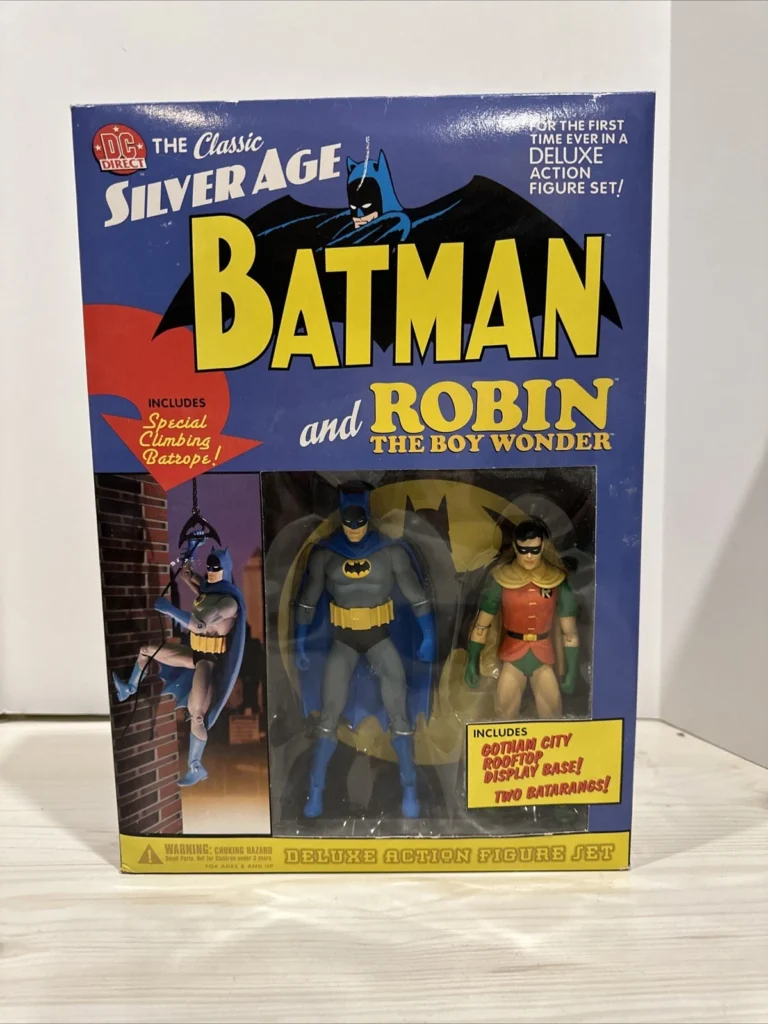
DC Direct paid tribute to Batman’s long history with Silver Age figures. These toys reflected the colorful, campy look of 1950s and 1960s comics. Batman appeared in his lighter blue and gray outfit, while Robin sported his classic red and green. Villains like Catwoman and Riddler came in designs inspired by older comic appearances.
This approach gave fans a sense of nostalgia while celebrating comic history. The figures stood apart from darker movie versions by highlighting a playful era of Batman storytelling. Collectors enjoyed the chance to own designs often overlooked by mass-market lines. They served as a reminder of how the character changed through decades of comics.
Green Lantern Corps Figures (DC Direct)
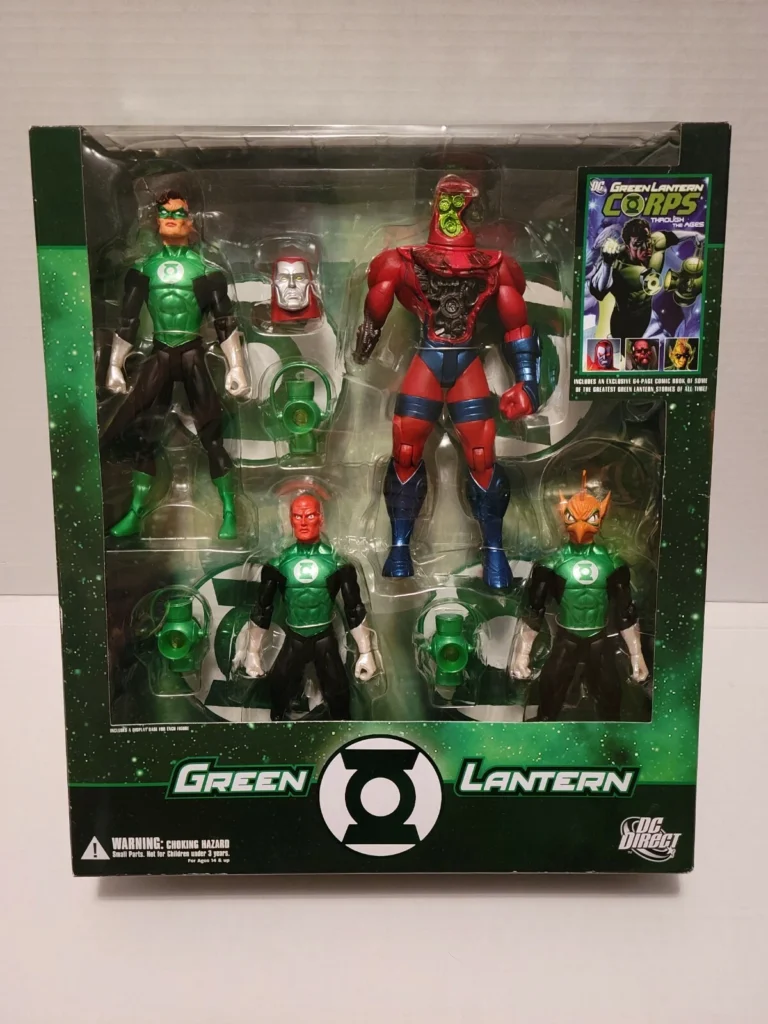
Green Lantern figures often focused on Hal Jordan, but DC Direct gave the Corps more attention. Releases included Kilowog, Guy Gardner, and John Stewart, each sculpted to match comic appearances. The variety reflected the richness of the Green Lantern comics, where many characters shared the same mantle. Fans valued the chance to collect lesser-known lanterns.
These figures often came in themed box sets, making them attractive for display. The designs leaned heavily on the comics rather than movie adaptations. This focus kept the line unique for collectors who followed Green Lantern stories closely. It also set a precedent for expanding superhero rosters in toy form.
Savage Dragon (Playmates / McFarlane)
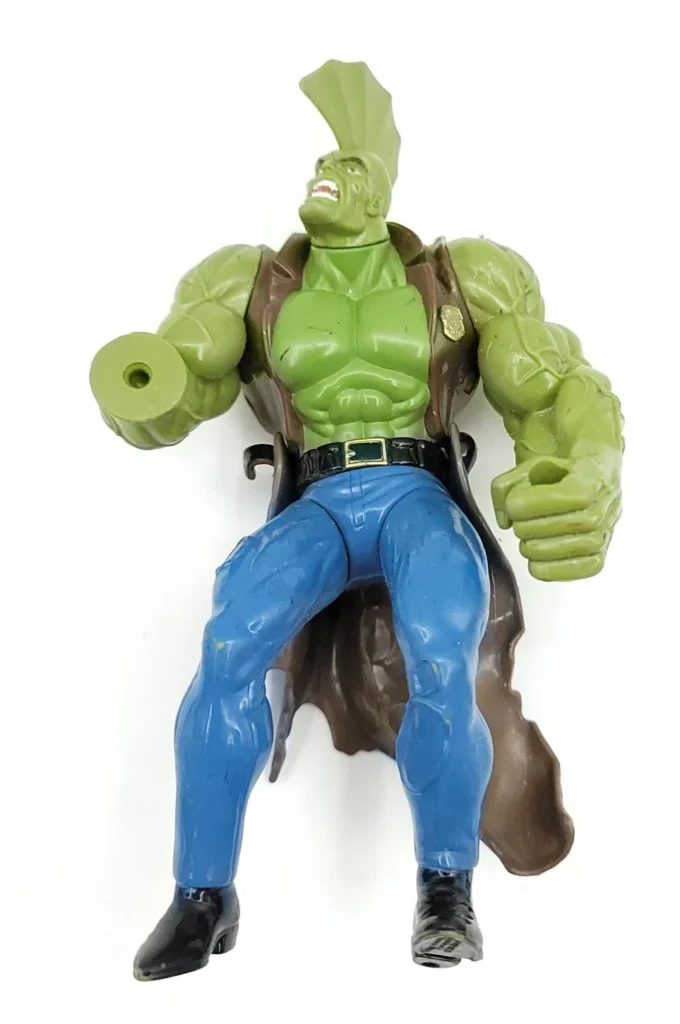
Erik Larsen’s Savage Dragon became another Image Comics property to hit toy shelves. The green-skinned police officer with a fin on his head was brought to life in figure form during the 1990s. The toys followed the comic look closely, complete with muscular builds and exaggerated features. Savage Dragon became one of the few independent comic characters to earn a toy line.
Figures of supporting characters and villains joined the main release. While the line was shorter-lived than Spawn’s, it still gave comic fans something unique. Collectors appreciated its faithfulness to the source material. These figures remain cult favorites for those who followed Image’s early years.
This article originally appeared on Avocadu.
